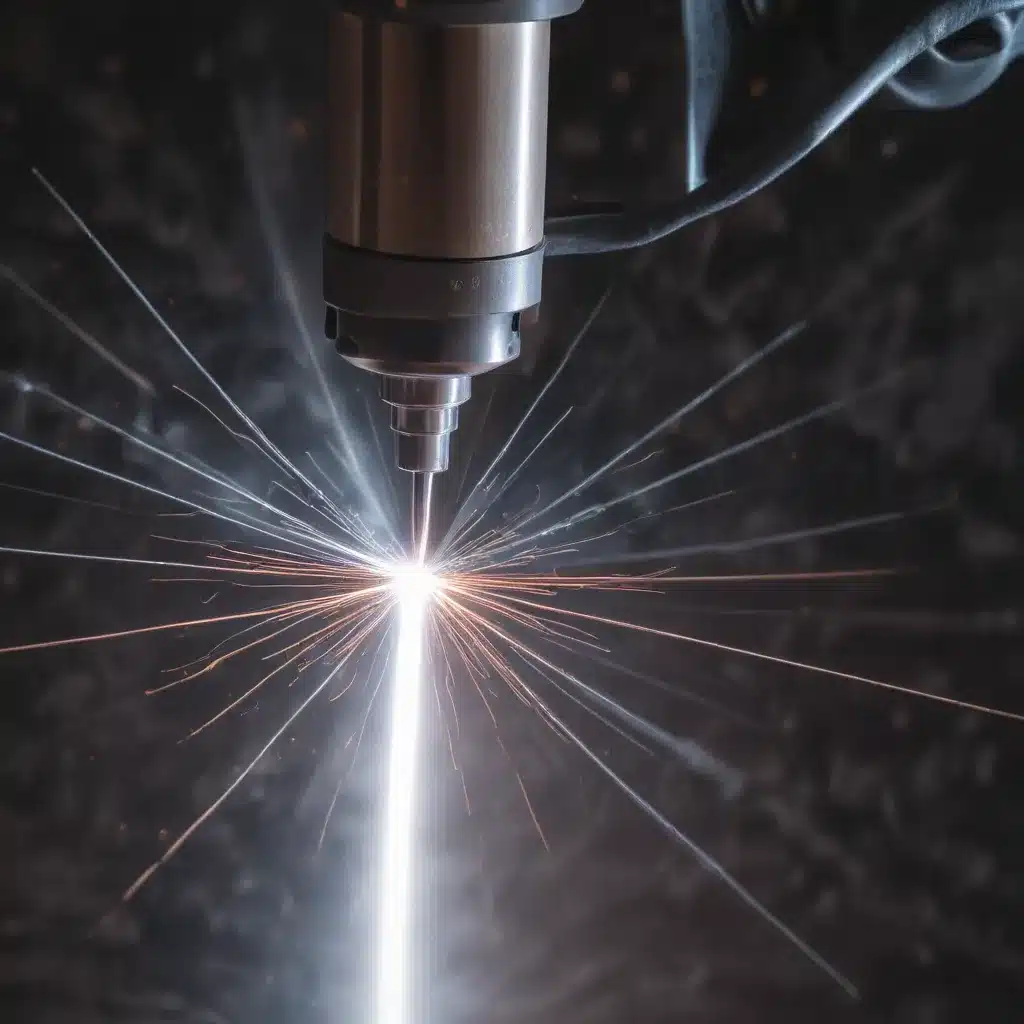
Mastering the Art of Metal Fabrication
As an experienced welder and metal fabricator, I’ve had the privilege of working with a wide range of materials, from stainless steel and aluminum to exotic alloys like the new nickel-based superalloy, G27. Over the years, I’ve witnessed the constant evolution of welding techniques, each offering unique advantages and challenges. Today, I’m excited to share my insights on the latest advancements in pulsed laser beam welding (LBW) and how it can help fabricators like myself achieve unparalleled weld integrity.
Welding has long been the backbone of metal fabrication, but as our industry continues to push the boundaries of design and performance, we’ve had to adapt our techniques to meet increasingly stringent requirements. Traditional arc welding, while reliable, can sometimes fall short when it comes to the precision and control needed for high-performance applications. That’s where pulsed laser beam welding shines.
The beauty of pulsed LBW lies in its ability to precisely control the heat input and weld pool dynamics, leading to improved weld geometry, reduced defects, and enhanced mechanical properties. I’ve had the opportunity to work with this technology on several projects, and I can attest to the remarkable results it can deliver.
One of the key benefits I’ve experienced is the exceptional control over the weld bead profile. By carefully adjusting the pulse frequency, pulse factor, power, and travel speed, we can achieve a consistent weld width, minimal undercut and underfill, and even eliminate common defects like porosity. This level of precision is particularly crucial when welding high-performance alloys like G27, which can be susceptible to weld imperfections.
Conquering the Challenges of Exotic Alloys
The G27 nickel-based superalloy, for example, presented some unique challenges during the welding process. As a fabricator, I’m always eager to work with new and innovative materials, but I knew that the complex microstructure and alloying elements of G27 would require a specialized approach.
Through a detailed statistical design of experiment, we were able to identify the optimal pulsed LBW parameters that minimized weld defects and produced a microstructure with the desired properties. The pulse factor, in particular, had a significant influence on the weld geometry and imperfections, highlighting the importance of fine-tuning these parameters.
One of the most impressive discoveries was the complete absence of cracks in the weld fusion zone and heat-affected zone. This is a testament to the precision and control offered by pulsed LBW, as cracks can be a common issue when welding high-strength, highly alloyed materials. The ability to avoid these defects is crucial for maintaining the structural integrity of the final fabricated component.
Harnessing the Power of Pulsed Laser Welding
As I’ve delved deeper into the world of pulsed LBW, I’ve come to appreciate the sheer versatility and power of this technique. Beyond its ability to weld exotic alloys, it can also be applied to a wide range of materials, from thin-gauge steel to thick-section aluminum. The key lies in understanding how to tailor the process parameters to the specific application and material at hand.
One of the most intriguing aspects of pulsed LBW is the way it can influence the microstructural evolution of the weld. By carefully controlling the solidification dynamics, we can promote the formation of desirable secondary phases, like the Nb-rich MC carbides and Laves phase observed in the G27 welds. These phases can play a critical role in determining the mechanical properties and performance of the final fabricated component.
Of course, as with any welding process, there are always challenges to overcome. In the case of pulsed LBW, one of the key considerations is managing the complex laser-material interactions that occur during the process. The recoil pressure generated by the intense laser energy can create a phenomenon known as the “keyhole,” which can lead to the ejection of molten metal droplets – a process commonly referred to as “spattering.”
Mastering the Intricacies of Laser-Material Interactions
As a seasoned fabricator, I’ve had to develop a deep understanding of these laser-material interactions in order to optimize the process and minimize any undesirable effects. By using advanced beam shaping techniques, we can carefully control the energy distribution on the keyhole front wall, which in turn influences the outflow characteristics and reduces the risk of excessive spattering.
It’s this level of attention to detail that sets the true masters of metal fabrication apart from the rest. We’re not just welding parts together; we’re carefully orchestrating a complex dance between the laser, the material, and the physics of the process to achieve the best possible outcome.
Embracing the Future of Sustainable Fabrication
Looking ahead, I believe that pulsed LBW and other advanced welding techniques will play a crucial role in the future of sustainable metal fabrication. As the demand for lighter, more efficient, and environmentally friendly products continues to grow, we’ll need to leverage every tool at our disposal to optimize our manufacturing processes.
Pulsed LBW, with its ability to precisely control heat input and minimize defects, can help us reduce material waste, improve energy efficiency, and extend the lifespan of our fabricated components. By working closely with our customers and design engineers, we can identify opportunities to leverage this technology to create truly innovative and sustainable solutions.
The Weld Fab Advantage
At The Weld Fab, we’re proud to be at the forefront of this welding revolution. Our team of skilled fabricators and welding experts are constantly exploring new techniques and technologies, always striving to push the boundaries of what’s possible. Whether it’s welding exotic alloys, creating complex multi-material structures, or optimizing our processes for maximum efficiency, we’re committed to delivering the highest level of precision and quality to our clients.
So, if you’re a fellow fabricator or a customer seeking the very best in metal fabrication, I encourage you to reach out to The Weld Fab team. Together, we can unlock the full potential of pulsed laser beam welding and other cutting-edge techniques, ensuring that your next project is a resounding success.


